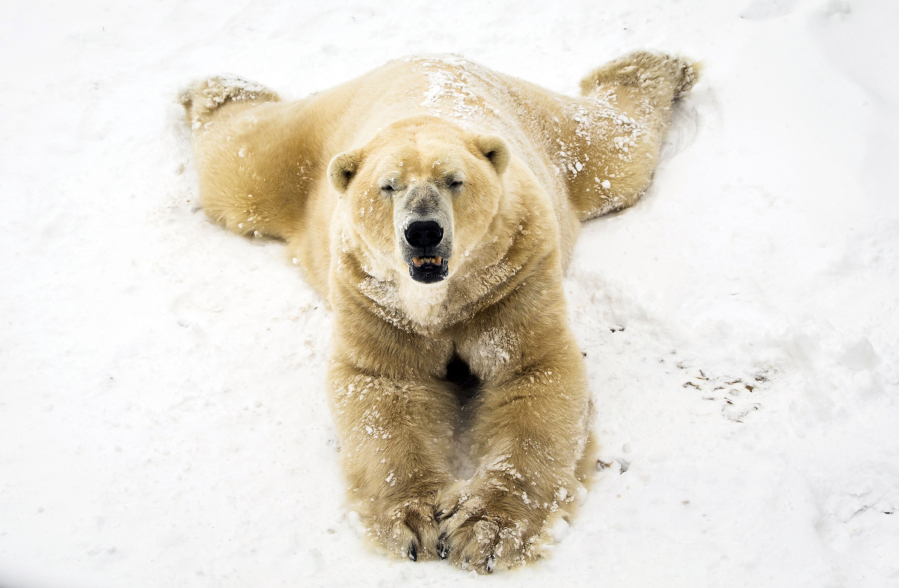It’s cold out. And our century-old way of staying warm — down jackets — may have just met its match.
A new study found that textiles that mimic polar bear fur may be better at keeping us warm than down jackets, not to mention less bulky.
In the study, published Dec. 21 in the journal Science, researchers in China tested a fiber modeled off of polar bear fur.
Polar bears stay warm in arctic temperatures thanks to the unique structure of their fur, the researchers said. Each strand of polar bear fur contains tiny air pockets that trap heat and prevent it from escaping. The porous core is then surrounded by a dense outer shell.
The scientists imitated this structure with a lightweight, synthetic material called an encapsulated aerogel fiber. They found that the polar-bear-inspired aerogel material maintains its heat-trapping properties even after being stretched, washed and dyed.
The group knitted a sweater out of the revamped aerogel fiber and tested its insulation against a down jacket, a wool sweater and a long-sleeved cotton top.
While the “polar bear” aerogel sweater was only one-fifth as thick as the down jacket, it had the best insulation of all four fabrics, according to the study.
Down jackets have had a 100-year heyday in global fashion thanks to Australian mountaineer George Finch, according to Snowshoe Magazine. In 1922, Finch was the laughingstock of his mountaineering circle, showing up to climbs wearing strange pillowy garb made of feathers and hot air balloon fabric while his friends continued to dress in tweed. He soon silenced their taunting, however, climbing higher than anyone else had ever climbed.
Ten years later, Eddie Bauer created a more functional, quilted version of Finch’s invention after he nearly died of hypothermia on the Olympic Peninsula in Washington, the magazine reported. The new warm down jackets became extremely popular.
Now, scientists’ new findings with the polar-bear-like fiber could represent a major step toward creating thinner winter clothing on a mass scale. According to Nature, the synthetic polar bear fur is far from ready to be mass-produced, but the research team has high hopes for the future.
“We are planning to improve its scalability,” Hao Bai, a researcher in the study, told the outlet.



